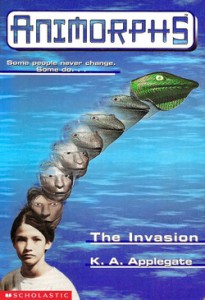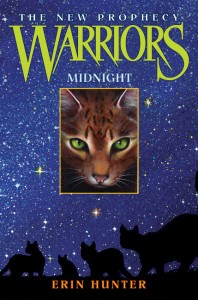Over the last few weeks, I have designed several covers, including two for POD books (which I put more time into than the weekly stories, honestly), and worked with an honest-to-goodness graphic designer in training (not my brother) on an ebook cover, which meant I had to explain ebook stuff.
Some thoughts:
- Simple ebook cover design: Pick a picture that looks good in mini (Smashwords home page) format. Put a very large title on it in a color that contrasts well. Author name can be smaller; tag line can be smaller still. Images from stock photo, fonts from Dafont, handle image with GIMP.
- Things that go together should have the same cover design, more or less.
- Personality counts. It’s better to capture the personality of a story than the literal truth.
- More complex cover design: Find out where your book fits in the market, what covers of books like your book look like. Consider borrowing an element or two from their covers, but don’t be too copycat. Consider borrowing elements from other books that aren’t in your market exactly–but are in a related market. Like copying some elements of an adult thiller cover in a YA thiller cover. Copying some romance cover elements in a fantasy-romance cover. Copying comic-book cover elements (ahem) in a middle-grade cover.
- Sometimes the cover design for big-publisher books is no good. So don’t copy the covers that don’t light you up.
That was the lesson from this morning. I struggled and struggled and struggled with the cover for Exotics #1: The Floating Menagerie…AUGH! I’ve been mentally building and rebuilding this cover since I put one together for Rachael, as a gift book, TWO YEARS AGO.
The two closest book-neighbors to this one are Animorphs and The Warriors series.
I have very carefully not read any of these books; the series is just too close to the premise of Exotics, and I don’t want to pick anything up. The main things this cover communicates to me are: part of a series (series title in big font), about a kid who changes into an animal. This looks modern day and science-fictiony…but it’s a very simple cover. Background, foreground image, plain text layouts, done. I go, “Which book is this in the series?” and “I don’t know, but it’s the one with the kid that changes into the lizard.” As an adult, I don’t really find it appealing. I’m not sure about kids–I mean, they read it, but there’s probably a reason people put Harry Potter cover posters on their walls and not Animorphs.
Interestingly, if you look up later editions of the Animorphs covers, they start to look more like Warriors covers.
The Warriors series covers generally look more attractive and more well-designed: a picture of a cat in some kind of cutout window in the middle, and a scene in the background. Again, the series title is prominent, and because there are sub-series, the subseries name is on the cover, too. These are generally just pretty covers, but they can be kind of confusing at times, when the background picture is a fully-developed image instead of a silhouette image, as here.
What are these books about? Cats. Probably not science-fictiony cats, but other than that, we’re not sure. For example, with most of the Redwall covers, you go, “Okay, high fantasy with mice. Got it.”
And which book is this in the series/sub-series? In addition, what’s the order of the sub-series?!? ACK! This bothers me and has actually prevented me from buying any of these books for my daughter, because I have no idea whether she’s read it before or not. Manga = number on the cover. I like that. I hate it when there’s no shorthand for which book goes where, especially in multi-generational series where it’s almost impossible not to have a story spoiled when you read the books out of order.
Okay. So here’s my test cover (third version this week). It has its shortcomings; I’m no graphic designer.
This is a book about kids who can turn into animals, in exotic locations. As a rough shorthand, I describe it as “Alias for kids.” Lots of betrayal, switching sides, and wheels within wheels.
What worked from the other covers: both showed animals. Both had their series titles in distinctive fonts.
What I didn’t like about the other covers: give me series order or give me death.
What worked from Animorphs: You can tell which book it is by the cover. This is the book where they’re on the ship; the wolf is the first Exotic the main character meets.
What worked from Warriors: The extra design elements give their covers more visual appeal and make it seem like the words inside will be well-written, maybe even a little philosophical. (Silhouettes against a starry background: pretty philosophical.)
Having the series title work is especially important, because I’m taking a big risk on the book titles by putting tough vocabulary words in each of them. The series title is how I refer to the books, so other people probably will, too.
What I feel like I’m missing:
A sense of action. I think that comes from using the wolf lying on the ground. And, really, Raoul never really holds still…except when he’s had the crap beat out of him by the bad guys. So I think that particular wolf has to go.
What I disregarded:
Thriller covers. Guh…I hate most thriller covers. I keep going, “What is this book even about? Is it even in a series? Why is the title so completely freaking bland and nonindicative of what I’m reading? Do they want me to be confused?!?” They might sell books, but I’m just not cut out for it. I feel like the cover design is telling me, “Thrillers are interchangeable…except that you want to be loyal to the writer.” Because the writer’s name is usually as big if not bigger than the title. “What’s important here is that you’re reading a LEE CHILD book. LEE CHILD. Got that? LEE CHILD.” Nothing against Lee Child; he’s just showing up in searches.
Colors:
I’m not sure about the colors. Logically, I feel like I need to use some bright blue on the cover (it shows up along with Raoul in later books), but I may have to be satisfied with the “alice blue” of the fonts. This isn’t a neon-colors kind of story, or even winter-colors (dark and rich but clear) kind of story. Dramatic, serious at times, complex. Probably darker colors, strong but shaded, are better. I looked up Alias, and yes. Those colors. The season box set covers would make great ebooks, come to think of it. I may darken the background darks just a hair.
Series:
I worked hard to find something that I could reproduce over five covers, by the way. Animal in front, setting in back.




Just a few comments about the cover.
The font seems much too busy at the top. For one, it seems more Science Fictiony. Second, it is very busy, taking away from the images on the cover and abit difficult to read. Depending on the age group, this might not attract a kid’s eye. Something simpler, perhaps an exotic looking script would work better.
It is difficult to see the ship under the bulls eye. At first glance I thought it was some sort of bridge.
Most generally, a nice simple set of images work best. The ship, the wolf, title, bylines and author names.
The dark image of the ship gives it a feeling of mystery and suspense. I agree finding a wolf in movement would be a bit better. The set of images you have now leans towards warm colors, but that can be shifted a bit in photo shop and the wolf you use later could influence that even more (Using a more white or black wolf).
Even so, I think you are close to what you imagined. It just needs a bit more adjustment.
Yep. The swirlies have got to go, and I’m thinking hard about that font. Thank you!
Shadow has some good advice there. Overall, I found it a bit too busy — things overlapping things I wasn’t expecting to be overlapped, and it’s not clear if that’s a bullseye behind the wolf (if so, it’s not really centered on the wolf’s head), or another of those spiral doohickies, or …
I think it could probably be simplified some.
Colors: something to bear in mind is that colors that appeal to adults might not have the same appeal as those that appeal to younger folks of various ages. Might be worth asking Ray which book covers she has where she likes the colors best.
You and I both like to know precisely which volume a book is within a series (or subseries). There’s a large element in the publishing realm that argues against that, though — because “Book 12 in the Pherdlapp Contingency” will scare off people who haven’t read the first 11, whereas if they are fooled and buy it (ch-ching), but the book has a good intro and explanation to date, they might decide to then buy the following books, or fill in behind. (Thus, the Dresden Files books went from “Book N of the Dresden Files” to “A Story from the Dresden Files” at one point.)
And, all that said, lookink at your two examples (and some others I can think of), you might consider having the volume title be under the series title, with your name at the bottom. That seems to be more common these days.
And, all THAT said, it sounds like a series Kay would love.
Thank you, Dave!
Great post. Know Zach will take note of it. He’s enjoyed working with you and learning along the way. This business is only getting bigger. Karen Lin
I knew that real graphic designers would read this eventually, and I’d just have to deal with their gentle hee hee hee’s. (I have sibs in the business.) But this is starting to get out of control…
Your designs are fabulous! Jealous I have to spend so much money on someone else, and you do it yourself. You’re on a roll and this seems like a niche you can continue, at least for your own books to avoid an expensive graphic designer. Look forward to possibly working with you in the future.
Milt
Wow, thank you!
Non-contributing Comment: I loved Animorphs!
Contributing Comment: Ironically, I have a ton of experience in graphic and print design, and I still have a hard time designing covers. It’s no easy feat. It also doesn’t help that I’m my biggest critic, so it takes me longer to design my own stuff than it would for, say, a client.
I think you do very well on your covers. It took a while before I picked up on the fact that you were doing them yourself. Most of them look professionally done, which makes sense because, at this point, you have enough experience to call yourself a professional. They’re pretty damn gorgeous. I was thinking about opening up shop for ebook cover designs. I definitely think you should.
The only tip I’d add to this list is to use clip art sites, like Microsoft Clip Art. I used a lot of Microsoft clip art for different websites and other projects over the years. I love iStockphoto, but it’s just not in my budget at the moment.
For tools, I use Photoshop, but that’s obviously out of a lot of people’s budget. (I only have it because I had to; it’s industry standard for web and graphic design. It’s even more expensive now than when I bought mine a few years ago. I was looking at it at Staples the other day and almost felt nauseous. Sheesh!) I don’t think you have to have anything fancy, though. I mean, Allie from Hyperbole and a Half used MS Paint for the longest time. You can do a lot with MS Paint. You just have to know what you’re doing. I could never go back to it though, now that I’ve been working with layers in Photoshop for so many years. I love me some layers.
The only thing I would recommend for this book cover — if you haven’t already come up with a final version, since I’m commenting on this a bajillion years after the fact — is to choose a less busy font. I kind of really like the rest of it.
Hm…I will have to check out the clip art sites.
I’m using GIMP and Scribus, which, together, are pretty handy. Separately = tear your hair out!
I LOVE Hyperbole and a Half. The one about depression was like, “YEP.”
I haven’t come back to the cover yet, actually….
And thank you for the compliments 🙂